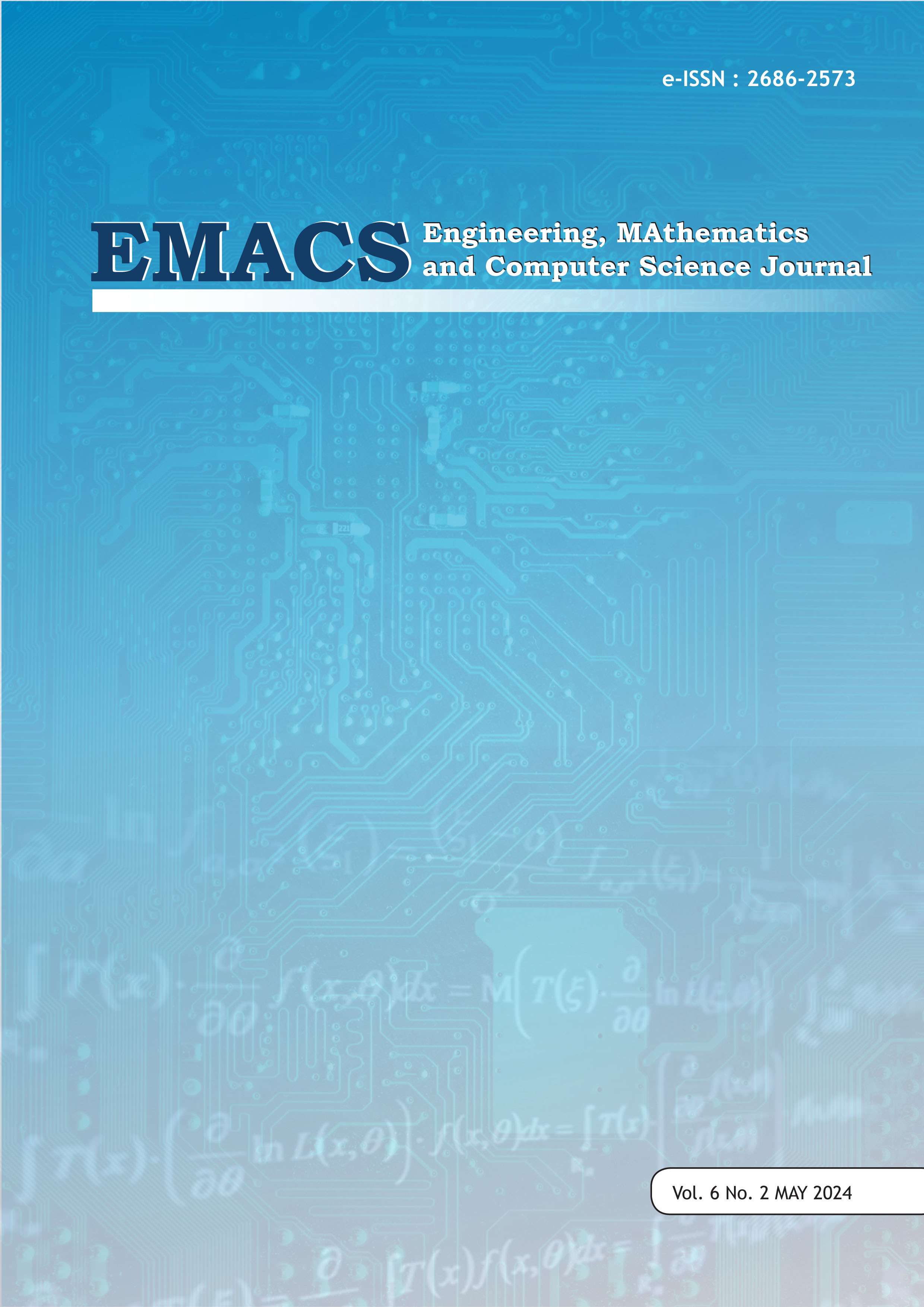Computer Resource Utilization Analysis for Microsoft Excel and Python in Data Processing
DOI:
https://doi.org/10.21512/emacsjournal.v6i2.11736Keywords:
Data Processing, Python., Microsoft Excel, Wilcoxon, Computer Resource UtilizationAbstract
Data analysis is essential for gaining insights and making informed decisions. A crutial step in data analysis is data processing, which involves preparing and filtering raw data to ensure accuracy, consistency, and structure. While Microsoft Excel is commonly used for data processing, it is susceptible to human errors and has limitations in handling large datasets. Python provides an alternative by automating data processing through scripts executed by the interpreter. The superior software for data processing is obtained by comparing the computer resource utilization based on statistical theory approach, Wilcoxon signed-rank test. This test is appropriate because it does not require the assumption of a normal distribution, providing flexibility in comparing computer resource utilization between Microsoft Excel and Python. Microsoft Excel and Python proceed *.csv and *.xlsx files, then Task Manager recorded the data of computer resource utilization for each processing step. The Wilcoxon signed-rank test analyzes the data and evaluating two hypotheses. H0 (there is no any significant differences in computer resource utilization between Microsoft Excel and Python are calculated for each data processing) and H1 (there is significant differences in computer resource utilization between Microsoft Excel and Python are calculated for each data processing). The sum of ranks in Wilcoxon test are compared to the critical value from the Wilcoxon distribution table to determine the accepted hypothesis. Based on the Wilcoxon test results, hypothesis H1 is accepted, indicating a significant difference in computer resource utilization between Microsoft Excel and Python.
References
Crowe, R., Winney, K. M., & Avila, M. I. (n.d.). A Comparison of R, Python, and Excel Power Query with Open-Source Financial Data.
Cuenca, V., Urbina, M., Córdova, A., & Cuenca, E. (2021). Use and Impact of Big Data in Organizations. Advances in Intelligent Systems and Computing, 1327 AISC, 147–161.
Essien, N. P., & Constant Umo, M. (2024). Conceptual Analysis of Optimization Strategies in Operating System (Windows and Unix) in the Current IT Trend from 2015 to 2023. INTERNATIONAL JOURNAL OF CONTEMPORARY AFRICA RESEARCH, 2(1).
Fanelli, S., Pratici, L., Salvatore, F. P., Donelli, C. C., & Zangrandi, A. (2023). Big Data Analysis for Decision-Making Processes: Challenges and Opportunities for the Management of Health-Care Organizations. Management Research Review, 46(3), 369–389.
Jelen, B., & Syrstad, T. (2022). Microsoft Excel VBA and macros : (Office 2021 and Microsoft 365).
Kaewrat, J., Janta, R., Thammarak, K., Rattikansukha, C., & Sichum, S. (2019). People and Data: Two Factors for Sustainable Development of Water Quality Management in Pak Phanang River Basin. Convention Center.
Ledin, Jim. (2020). Modern Computer Architecture and Organization. Packt Publishing.
Mansour, M. F., Aly, Dr. T., & Gheith, Prof. M. (2024). Python Based End User Computing Framework to Empowering Excel Efficiency. International Journal for Research in Applied Science and Engineering Technology, 12(4), 2719–2729.
Mckinney, W. (2022). Python for Data Analysis: Data Wrangling with Pandas, NumPy & Jupyter (3rd ed.). O’Reilly. www.allitebooks.com
Menghinello, S., Pritchard, A., Ravindra, D., Blancas, A., Alcantara, G. A. D., Hermans, H., & Al-Kafri, S. (2020). A Strategic and Data Production Frameworks for the Development of Business Statistics. Statistical Journal of the IAOS, 36(3), 607–613.
Peng, J., & Li, B. (2017). Single-aliquot Regenerative-Dose (SAR) and Standardised Growth Curve (SGC) Equivalent Dose Determination in a Batch Model Using the R Package “numOSL.†Ancient TL, 35(2).
Rahmany, M., Mohd Zin, A., & Sundararajan, E. A. (2020). Comparing Tools Provided by Python and R for Exploratory Data Analysis. IJISCS, 13–1.
Sousa, R., Miranda, R., Moreira, A., Alves, C., Lori, N., & Machado, J. (2021). Software Tools for Conducting Real-Time Information Processing and Visualization in Industry: an Up-to-Date Review. In Applied Sciences (Switzerland) (Vol. 11, Issue 11). MDPI AG.
Sun, Y., Ou, Z., Chen, J., Qi, X., Guo, Y., Cai, S., & Yan, X. (2021). Evaluating Performance, Power and Energy of Deep Neural Networks on CPUs and GPUs. Communications in Computer and Information Science, 1494 CCIS, 196–221.
Walpole, R. E., & Myers, R. H. (2023). Probability & Statistic for Engineers & Scientists (9th ed.). Pearson.
Downloads
Published
How to Cite
Issue
Section
License
Copyright (c) 2024 Kelvin Kelvin, Wahidin Wahab, Meirista Wulandari

This work is licensed under a Creative Commons Attribution-ShareAlike 4.0 International License.
Authors who publish with this journal agree to the following terms:
- Authors retain copyright and grant the journal right of first publication with the work simultaneously licensed under a Creative Commons Attribution License - Share Alike that allows others to share the work with an acknowledgment of the work's authorship and initial publication in this journal.
- Authors are able to enter into separate, additional contractual arrangements for the non-exclusive distribution of the journal's published version of the work (e.g., post it to an institutional repository or publish it in a book), with an acknowledgment of its initial publication in this journal.
- Authors are permitted and encouraged to post their work online (e.g., in institutional repositories or on their website) prior to and during the submission process, as it can lead to productive exchanges, as well as earlier and greater citation of published work.
USER RIGHTS
All articles published Open Access will be immediately and permanently free for everyone to read and download. We are continuously working with our author communities to select the best choice of license options, currently being defined for this journal as follows: Creative Commons Attribution-Share Alike (CC BY-SA)





